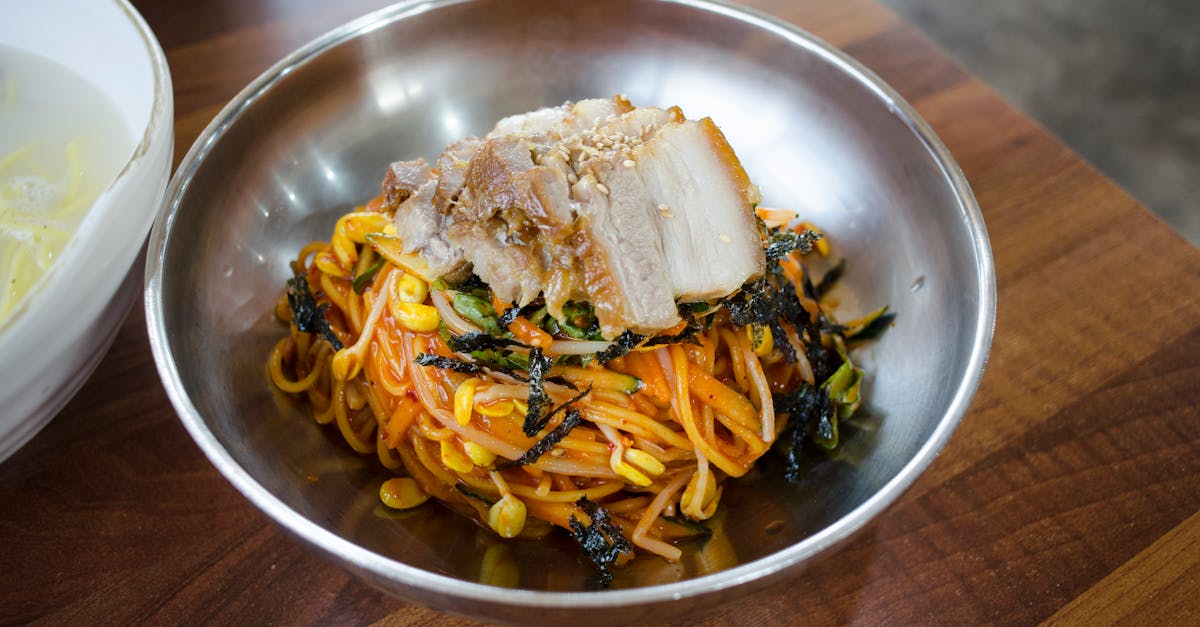
Introduction
As we inch closer to 2025, the culinary world is abuzz with speculation and excitement over the anticipated Flavor Futures. This concept explores potential innovations in taste profiles, ingredients, and culinary experiences set to shape the gourmet scene. The rise of globalization and technology continues to redefine how flavors evolve and influence dining cultures worldwide. From advanced food technologies to reimagined traditional recipes, these trends pave the way for a new era in gourmet cuisine. With customer curiosity growing, chefs, producers and food enthusiasts alike are ready to embrace these captivating changes. Let's delve into what Flavor Futures 2025 has in store.
Global Fusion Flavors
One striking trend expected to dominate is the fusion of global cuisines, where diverse culinary traditions unite to create unique flavor experiences. This emergence extends beyond conventional pairings, exploring harmonies between previously unimagined combinations of dishes. With globalization blurring geographical boundaries, chefs are breaking free of cultural confines to curate menus that celebrate diversity. The infusion of African spices into Scandinavian dishes or Caribbean herbs into Asian recipes exemplifies this exciting evolution. Techniques like fermentation, traditionally associated with specific regions, are now being innovatively adapted, pushing the envelope of gastronomic exploration.
Plant-Based Versatility
The plant-based movement continues to gain momentum, blending seamlessly into the gourmet scene. Innovative plant-based options are becoming central to experimental dining, with chefs marrying plant-derived proteins with bold flavors to create culinary masterpieces. From silky walnut ricotta to hearty jackfruit stews, the focus is on transforming plant ingredients to more closely mimic traditional meat-based dishes without compromising on taste. The shift towards plant-based dining is not just about health; it's driven by a growing appreciation for sustainability and sustainability-conscious consumers. Cultured meats, made from lab-grown cells, are also on the horizon.
Exploring Spherical Sunshine
Innovative ingredients like spherical sunshine—dehydrated and rehydrated citrus spheres showcasing bursts of flavor—could redefine the citrus experience. Chefs are finding creative ways to integrate these spheres into dishes, allowing diners to experience a concentrated punch of zesty flavors that elevate the dish's overall profile. Whether embellishing a salmon tartare or accompanying a chocolate dessert, these bursts of sunshine add a refreshing twist that engages the senses. This innovative approach builds upon the recent trend of elevating simple, natural ingredients into gourmet masterpieces, appealing to diners seeking vibrant new flavor experiences.
Functional and Fortified Foods
The growing health-consciousness among diners is fueling a surge towards developing functional foods—those rich in vitamins, minerals, and bioactive compounds. Superfoods infused into gourmet creations promise to deliver health benefits while satisfying taste buds. Expect to see foods fortified with adaptogens like ashwagandha, stress-reducing mushrooms, and antioxidants integrated into gourmet sauces or entrees. The future of dining may see menus spotlighting ingredients for their nutritional value, promising not just a meal but a curated experience that balances indulgence with well-being. This nutrient-rich paradigm continues to pave the way for elevated experiential dining.
Embracing Umami Variations
As palates evolve, there is an intensified craving for umami, the savory fifth taste amplified through fermentation, smoking, and other techniques. Flavor Futures 2025 will see a proliferation of umami-rich elements like miso, bonito flakes, and kombu, used in unexpected ways across different culinary landscapes. Lentils and algae are joining the ranks, enhancing umami diversity across global dishes. With chefs adopting innovative methods to develop this savory spectrum, diners can expect tastes that resonate with depth and complexity. This growing popularity explores how umami influences satisfaction and how layered flavors redefine traditional dining experiences.
High-Tech Culinary Tools
Innovation in culinary technology will likely redefine how flavors are explored and developed. Molecular gastronomy will transform into mainstream practices, allowing for flavor encapsulation and textural experiments. High-tech tools, like food printers and digital flavor databases, expand creative canvases for both culinary professionals and aspiring gourmets. Smart kitchens equipped with AI enhance precision cooking, enabling chefs to execute intricate techniques with ease. Such technological advancements could make gourmet experiences more accessible, inspiring curiosity and experimentation in the kitchen. By embracing these advancements, chefs blur the boundary between science and art in gastronomy.
Culinary Storytelling
Flavor Futures 2025 highlights the art of culinary storytelling, where flavors narrate an evocative story behind each dish. As diners become more discerning, there is a growing demand for the backstory behind the meal, fostering a connection between chef, ingredient, and consumer. Dishes inspired by history, cultural narratives, or personal journeys appeal to those seeking meaningful dining experiences. This emphasis on storytelling compels chefs to delve deeper into sourcing ethical ingredients, promoting not just sustainable practices but also honoring cultural heritage. The result is a richer, more immersive gastronomic journey rooted in authenticity and authenticity-driven innovation.
Digital and Interactive Dining
The future of gourmet dining resonates with digital dining concepts, driven by an increasingly tech-savvy audience. Virtual reality experiences invite diners to "travel" to various culinary hotspots worldwide, exploring distinct flavors from different cultures. Augmented reality garnishes dishes with interactive elements that provide diners with informative overlays, making every meal an educational experience. This integration of technology with dining not only captivates immersive adventurers but also democratizes culinary knowledge and exposure. The digital age evolves into a culinary canvas where technology and flavors intertwine in unprecedented leisure and learning experiences.
Summary and Conclusion
As 2025 approaches, the culinary world is poised for a tantalizing transformation driven by Flavor Futures. Chefs and food innovators are embracing exciting leaps forward, from reimagining flavors to harnessing cutting-edge tech tools and embracing sustainable practices. Despite diverse interpretations, Flavor Futures collectively capture the imagination of gourmets and food enthusiasts. At its core, this movement promotes the development of unique tastes while opting for inclusivity and responsibility, preserving our planet and honoring our collective culinary inheritance. As we prepare to welcome this flavorful tomorrow, our culinary landscapes continue to diversify and flourish.